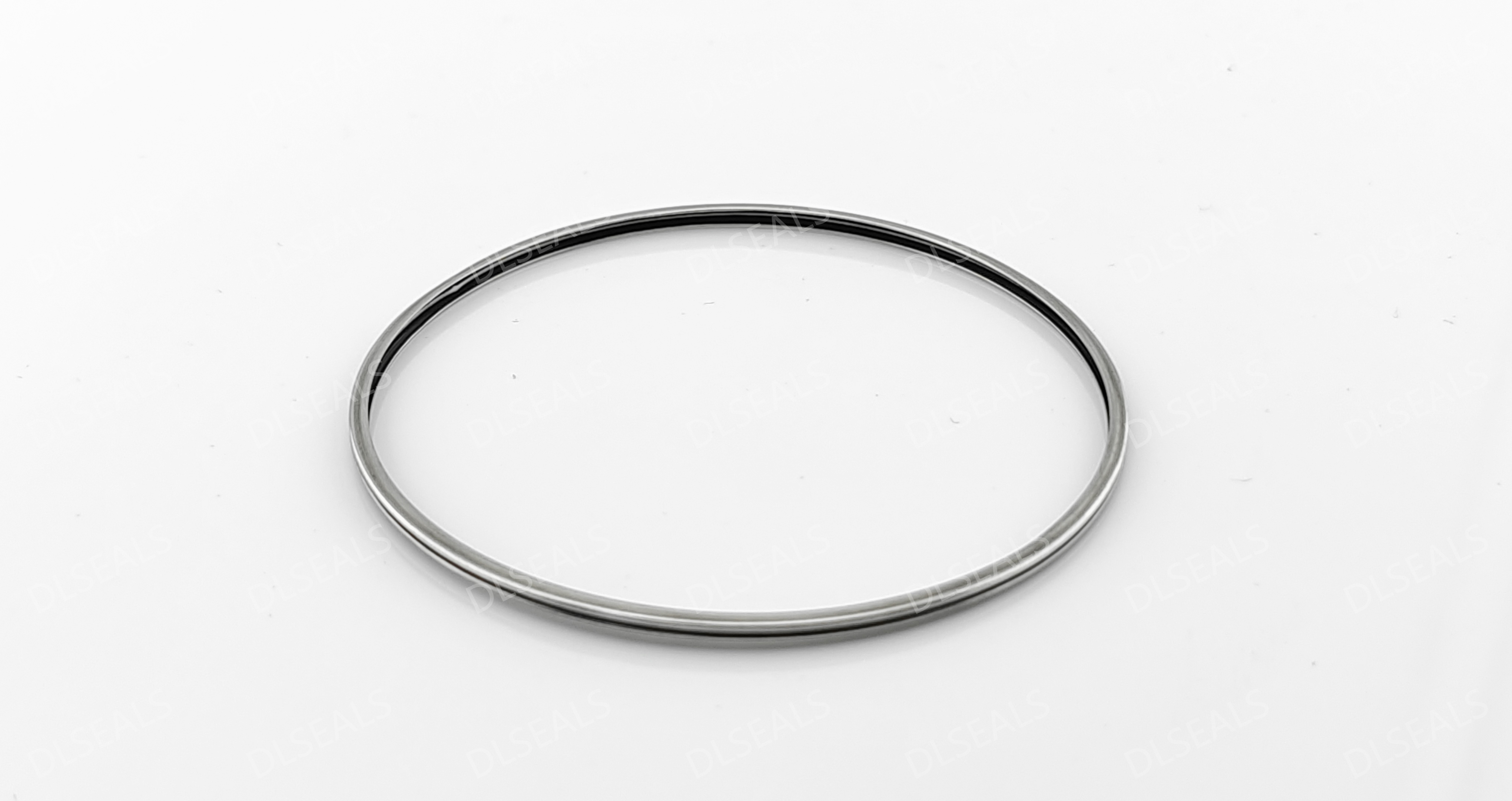
Metal E-rings are widely used in sealing systems, mainly for static and dynamic sealing, especially in high pressure, high temperature and highly corrosive environments. Understanding the basic principles and design methods of metal E-rings will help understand their superior performance in various applications.
1. Basic principles
Sealing mechanism: Through its unique “E”-shaped cross-section design, the metal E-ring will produce a certain elastic deformation after being compressed, so that it fits tightly to the sealing surface and forms a reliable sealing barrier.
Pressure adaptability: Unlike traditional O-rings, E-rings are designed with the pressure distribution between the sealing surfaces in mind, and can maintain the sealing effect over a wide pressure range.
2. Design elements
Geometric parameters: The design of E-rings mainly includes the following geometric parameters:
Inner diameter (ID): refers to the hole diameter at the center of the E-ring, which is used to match the shaft or rod.
Outer diameter (OD): refers to the outer diameter of the E-ring as a whole, which determines its installation space.
Width (W): refers to the width of the E-ring cross section, which directly affects its sealing ability and elasticity.
Opening width (SW): refers to the distance between the two wings of the E-ring, which affects its deformation ability and sealing contact area.
Height (H): refers to the total height of the E-ring cross section.
Material selection: When designing an E-ring, it is necessary to select the appropriate material to meet the specific use environment. Commonly used materials include stainless steel, titanium alloy, Inconel, etc. These materials have excellent corrosion resistance, high temperature resistance and mechanical strength characteristics.
3. Design steps
Demand analysis: First determine the specific application environment (such as temperature, pressure, chemical corrosion, etc.) and mechanical requirements of the E-ring.
Material determination: Select the appropriate metal material according to the application conditions. For example, stainless steel or Inconel may be a better choice in high temperature and corrosive environments.
Geometric design: Use computer-aided design (CAD) tools for geometric design. The main parameters include inner diameter, outer diameter, width, opening width and height. These parameters need to be supported by empirical formulas and experimental data to ensure the best sealing effect and mechanical strength.
Finite element analysis (FEA): Through finite element analysis, the performance of the E-ring under actual operating conditions can be evaluated, including deformation, stress and heat distribution. This helps to optimize the design and prevent potential failure points.
Prototype manufacturing and testing: Prototypes of E-rings are manufactured and preliminary tests are performed to verify their sealing performance and service life. Necessary adjustments are made based on the test results.
4. Design challenges and solutions
Dimensional accuracy: Since the E-ring needs to fit tightly to the sealing surface, dimensional accuracy is critical. Its accuracy can be guaranteed by high-precision CNC machine tools and laser processing technology.
Sealing surface fit: Ensuring that the E-ring fits tightly to the sealing surface under various operating conditions can be achieved by adjusting the material and geometric parameters.
Durability: Improving the durability of the E-ring can be achieved by selecting high-strength alloys and performing surface treatments (such as nitriding and plating).
5. Innovative design
Composites: Composite materials that combine metals and polymers can enhance the wear resistance and sealing performance of the E-ring.
Smart materials: Develop smart materials with self-healing functions so that the E-ring can automatically restore its sealing function when slightly damaged.
Conclusion
The basic principles and designs of metal E-rings are inseparable from their unique design ideas and diverse material choices. Through scientific analysis and optimization, the sealing performance and life of E-rings can be significantly improved to meet various application requirements from low pressure to high pressure, from normal temperature to high temperature, and from conventional environment to extremely corrosive environment. With the advancement of technology and the emergence of innovative materials, the design and application of metal E-rings will usher in more possibilities and development space.
Post time: Oct-22-2024
